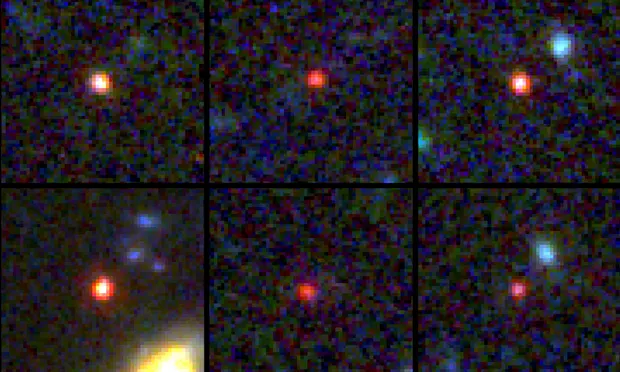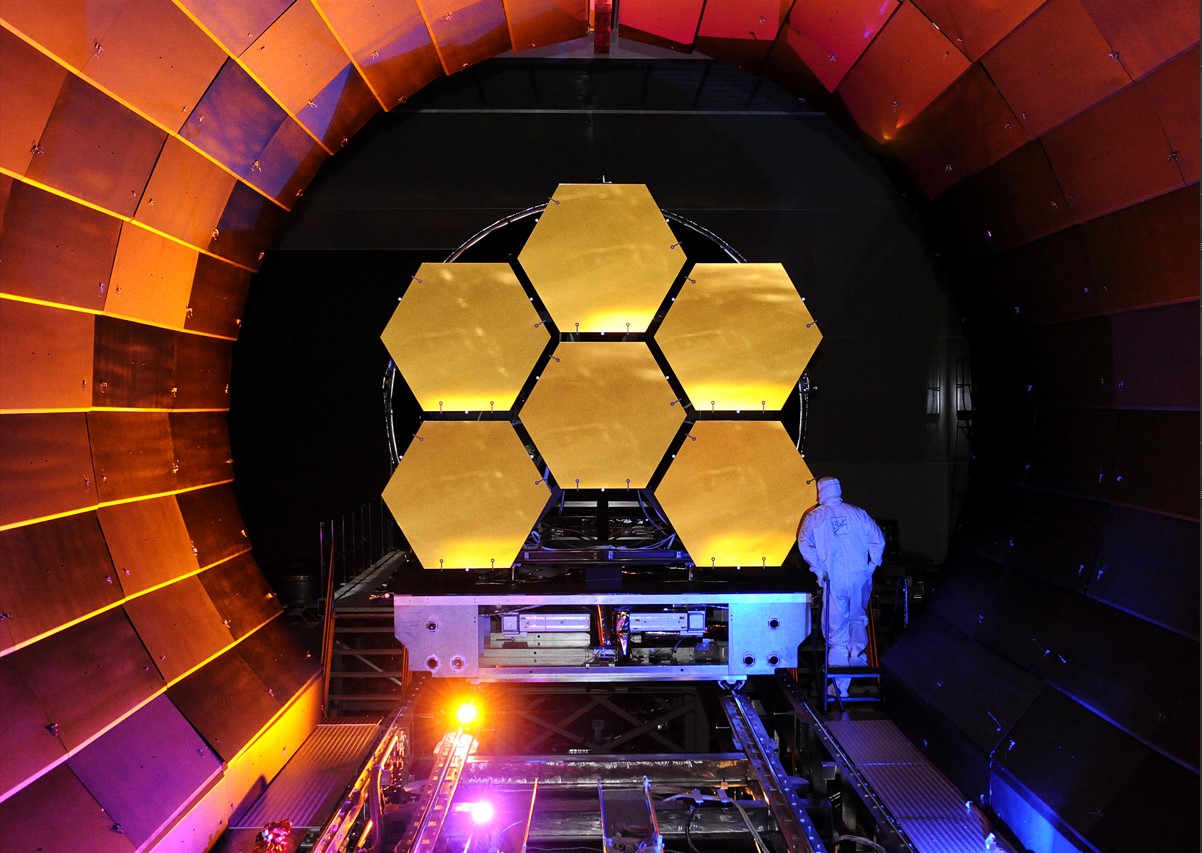
“It’s bananas,” exclaimed Dr Erica Nelson, co-author of a paper on a collection of fuzzy, red smudges of light from distant galaxies picked up by the James Webb Space Telescope (JWST): “These galaxies should not have had time to form.” And yet, there they are! Massive, mature, insolent galaxies, shining brightly, in complete disregard of the fact that the Big Bang theory says they cannot exist.
A new paper has identified six of them in a tiny patch of the sky in the constellation Ursa Major. Wherever we choose to look, we will inevitably find countless more. Their distance is such that we see them as they were just 500 million years after the supposed origin of the universe—that is, if we accept the standard model of Big Bang cosmology. And yet, these galaxies are as massive and as mature as our own Milky Way. There is simply no way they could have been formed in the time allotted to them by the established theory.
If such galaxies cannot form in such a tight time frame, then presumably it is the time frame and not the galaxies themselves that are in the wrong. So this must be the end of the Big Bang theory, right? Wrong! In the words of Joel Lega, a co-author of the aforementioned paper: “It turns out we found something so unexpected it actually creates problems for science. It calls the whole picture of early galaxy formation into question.”
Whilst this data from the JWST is about as close as we can get to conclusive evidence proving that the universe was not created in a Big Bang 13.8 billion years ago, some field-leading astronomers now believe we must contrive mechanisms to make galaxies form at absurd, unphysical speeds.
Listening to highly-esteemed astronomers drawing such conclusions about the need to salvage the Big Bang from the empirical evidence, we are struck by certain parallels between the present situation in cosmology and the state of geology in the 17th century.
How to squeeze a geological age into just six days
In an age when humanity’s collective scientific endeavour has allowed us to leap from Sputnik I to Hubble in a mere 30 years, and from Hubble to James Webb in another, short, 30-year step, it is a common self-deception to believe that we stand as far above earlier generations philosophically as we do technologically. That, presented with the same empirical evidence as past generations, the modern scientific mind would never fall into the same pitfalls. The history of science, unfortunately, tells a different story.

For instance, in the 17th century, the science of geology, like astronomy today, was going through a phase of rapid accumulation of new observational data. Nicholas Steno, a Danish scientist, had noticed that some rocks found on mountainsides were identical in form to modern sharks’ teeth. How could sharks have lost their teeth on mountainsides? Meanwhile, strange mineralized bones were turning up in deep limestone quarries—fossils of long-dead animals, unlike anything presently walking the Earth.
In his observations of rocky outcrops, Steno also observed clear stratification. Clearly, each stratum had been built up, layer upon layer upon layer, in chronological succession.
Steno’s observations suggested the Earth has a history—a far richer one than previously suspected. Sharp differences appear at certain points in the rock—some layers suggested there had once been lush forests, others indicate desert conditions, others riverbeds that long ago dried up. And within those layers, unique fossils that point to whole ecosystems coming and going.
How could this rich history be squeezed into the short timescale dictated by the Book of Genesis? That was the problem facing geologists. It is a problem not so dissimilar to that posed before cosmology as we delve into our local universe and its history and find ‘universe breaking’ galaxies, just as Steno delved into the Earth’s strata and found sharks’ teeth.
Yet human thinking is conservative by nature, and the Creation story of Genesis did not instantly give way before the new evidence. Instead, reality was shoehorned into the theory. Catastrophes were invoked that might have laid down enormous amounts of history in a short time: meteor impacts, great Noachian floods caused by the Earth passing through comet tails, etc. These were the origins of ‘catastrophism’, a theory of cataclysms making and remaking our planet.
Catastrophism’s rational kernel
On the basis of false hypotheses, a great deal of excellent science has been conducted. Many false theories contain a rational kernel that demands to be separated from its false and irrational husk.

That was true of catastrophism, which was the theoretical lodestone of a great geological school in France. And although the catastrophist view was eventually forced to yield before the unstoppable advance of empirical science, it is recognized today that the Earth has seen many episodes of catastrophic change. Not only are these periods not in contradiction with the existence of other epochs of slow, gradual change, but the latter laid the basis for the former and vice versa.
Of course, every analogy has its limits, and it goes without saying that cosmology is not geology. Nevertheless, just as what was valuable in catastrophism is preserved in modern geology, so everything of value in the present cosmology will find its place in a higher understanding of the local universe.
The idea of rapid periods of structure formation; of one or many ‘Big Bangs’ in the sense of phases of rapid expansion of parts of the universe, may very valuably inform our understanding of the universe long after the ‘standard model’ of Big Bang cosmology has been abandoned.
But we are convinced that the irrational side of the theory – the idealistic notion of an origin to the universe; of a moment of creation of matter, space and time; and all the absurd mathematical patch-ups that keep the theory going—all that will be forced to give way under the weight of observational evidence, and scientists will once more recognize that the universe is infinite and eternal, and that matter can neither be created nor destroyed.

